Yin Kai: The kung fu master behind Wukong's game
Writer: | Editor: Zhang Zhiqing | From: | Updated: 2024-10-15
Light+ attack, heavy attack, dodge, immobilization, and transformation. As millions of “Black Myth: Wukong” players fight their foes with unrestricted skill combos and abilities, some may be left wondering how these ultra-realistic moves were made possible.
Considered the first high-cost, high-volume, high-quality, stand-alone video game developed in China, “Black Myth: Wukong” relied on cutting-edge motion capture technology to incorporate real-world martial arts into the game. With motion capture technology, the movements of professional martial artists were precisely captured and processed into virtual data, which was used for the actions of in-game characters.
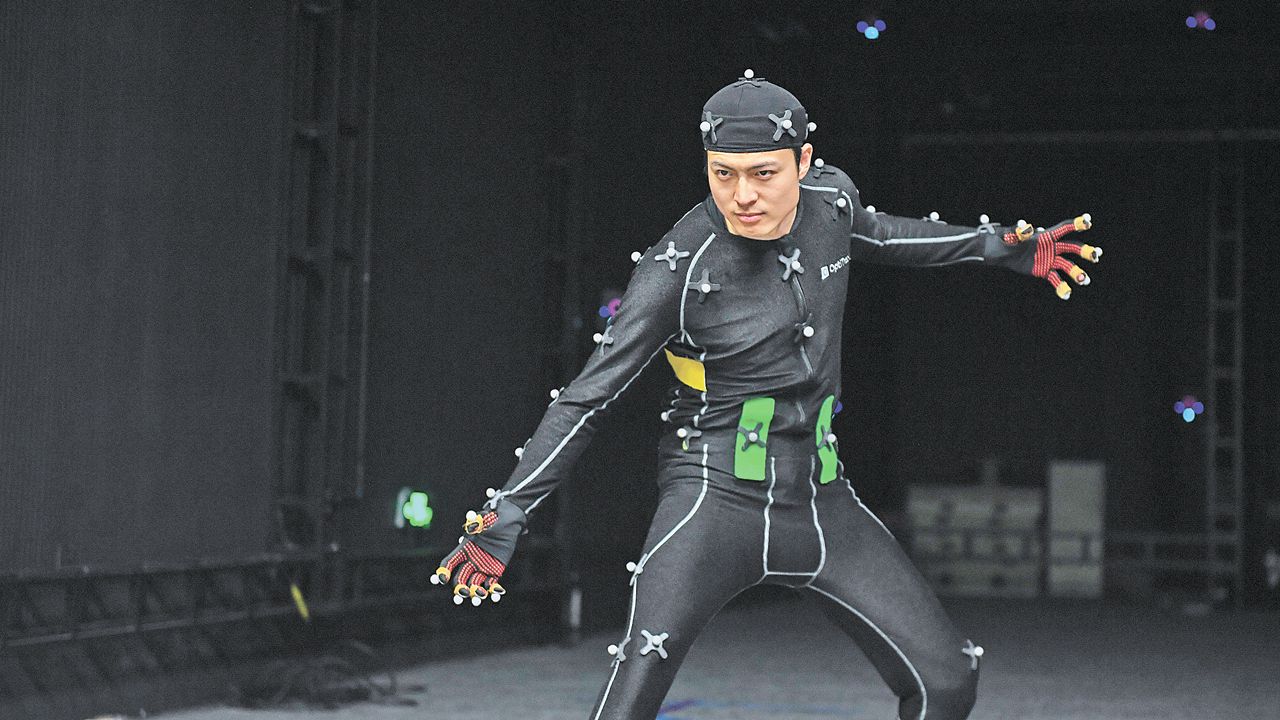
Yin Kai, a martial artist who undertook the majority of the action work for Wukong, the protagonist of "Black Myth," performs during a motion capture process at a motion capture base in Shenzhen in this Aug. 28 photo. Photos from Xinhua
Yin Kai, hailing from Shandong Province, is among the game’s motion capture crew. He undertook the majority of the action work for the game’s protagonist, the renowned Wukong, or Monkey King, from “Journey to the West,” a classic 16th-century Chinese novel written by Wu Cheng’en. The novel follows the adventures of a monk and his three disciples, with a particular focus on the legendary Wukong, who is known for his supernatural powers and mischievous nature.
“Many people have a childhood dream of becoming the Monkey King. As I trained in the martial art that uses a staff similar to his, I accepted the job offer right away,” Yin was quoted as saying in a feature story released by China Media Group.
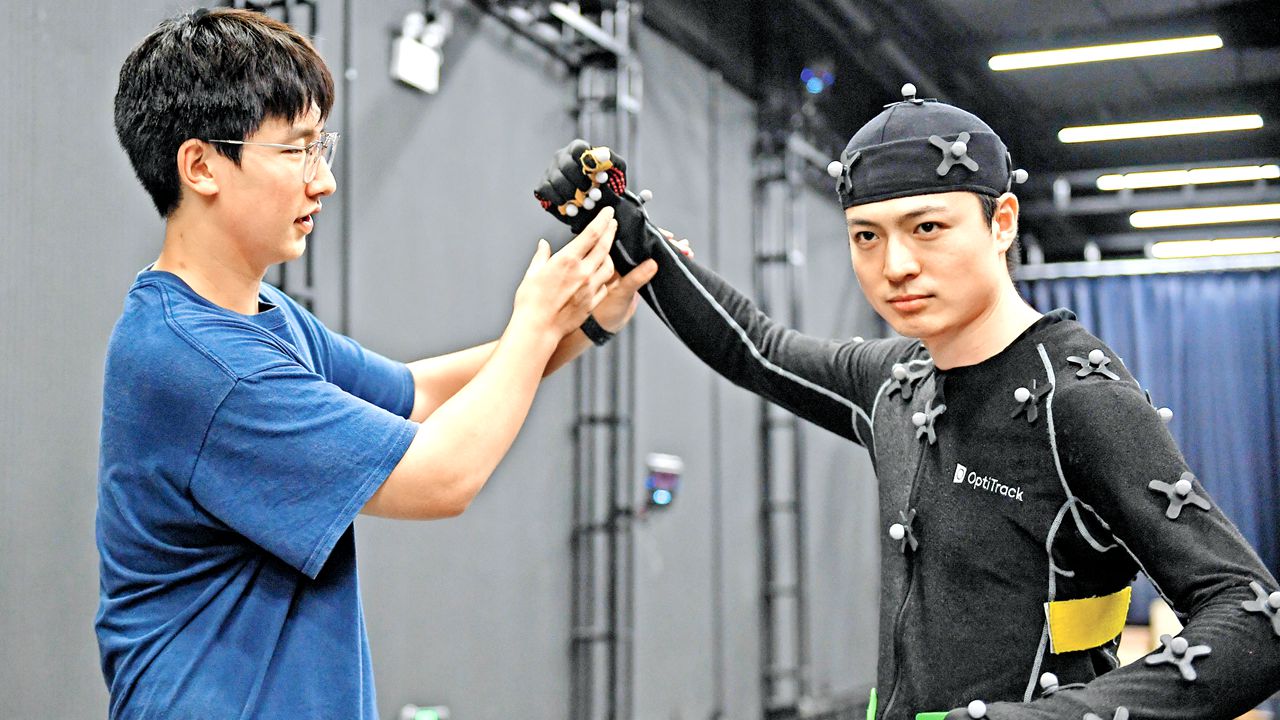
Yin Kai (R), the protagonist of "Black Myth," performs during a motion capture process at a motion capture base in Shenzhen in this Aug. 28 photo.
Inspired by world-famous Chinese movie stars like Jackie Chan and Jet Li, the kung fu enthusiast began practicing martial arts at the age of 5 and majored in martial arts performance at the Shanghai University of Sport.
To make the combat scenes more engaging, both technically and artistically, Yin integrated a variety of elements from Chinese martial arts and traditional opera. He also used nuanced body gestures to express different facets of his characters. For instance, Yin spent a lot of time observing monkeys so that he could emulate their movements and vividly portray the animality and intelligence of the game’s protagonist.
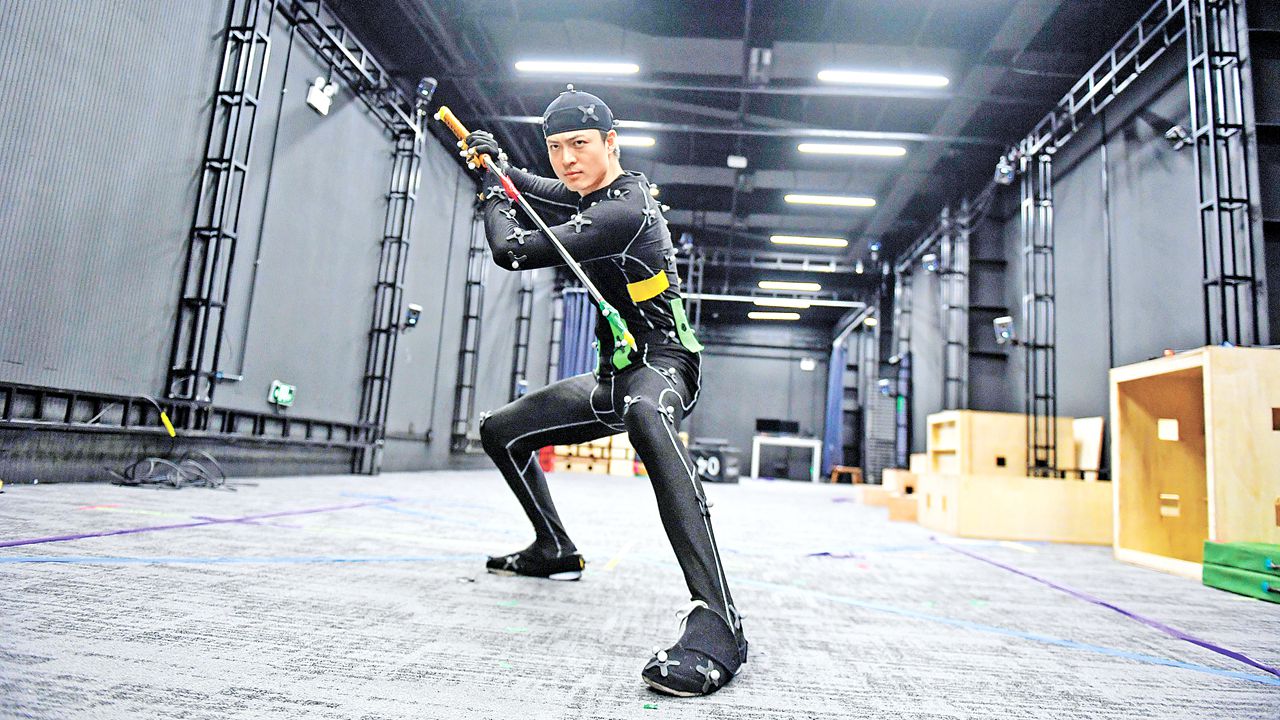
Yin Kai performs during a motion capture process at a motion capture base in Shenzhen in this Aug. 28 photo.“Every time we start filming a character, we will speak with the directors in advance about its personality, background, signature weapon, moves, and so on,” Yin explained.
For every perfect move on the game screen, the motion capture crew may have had to attempt it multiple times. “Sometimes a shoot started at around 10 a.m. and ended at 2 a.m. the next day,” Yin said.
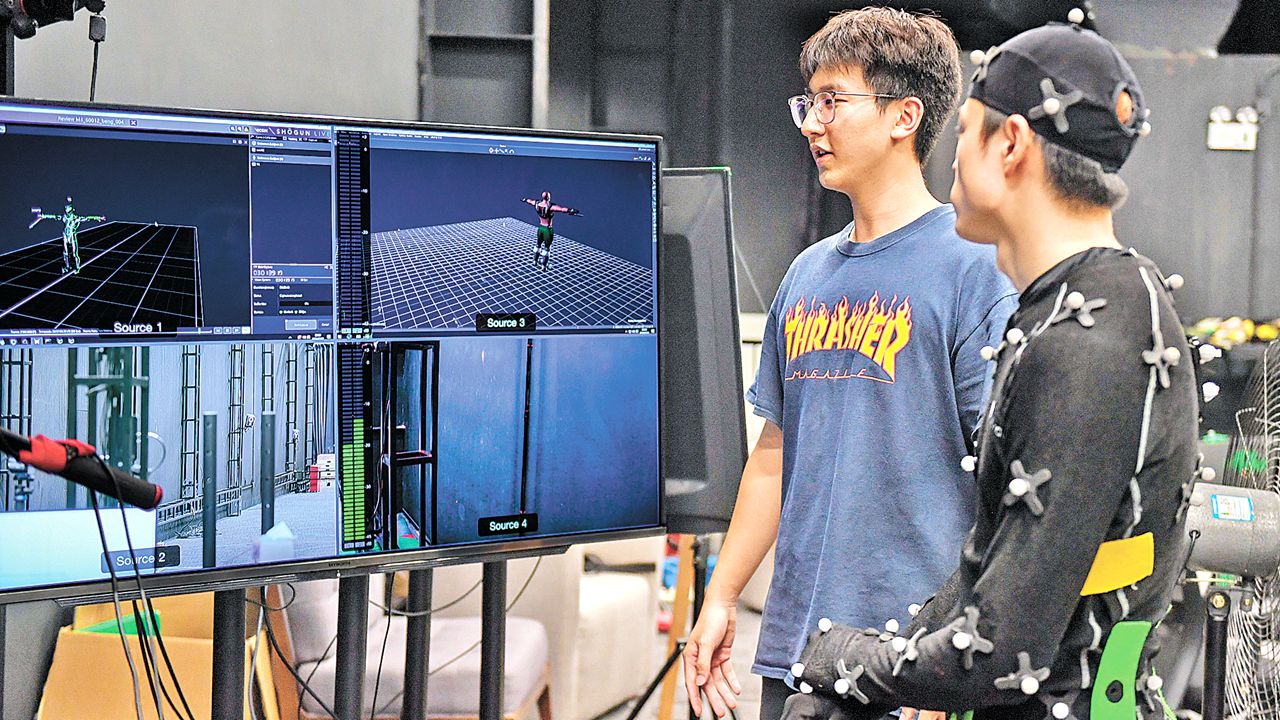
A motion capture artist for "Black Myth: Wukong" interacts with Yin Kai (R) during a shoot in Shenzhen in this Aug. 28 photo.
Considered the first Chinese-developed Triple-A video game title, "Black Myth: Wukong" was an instant success, topping the most-played games list on the Steam gaming platform, just an hour after its debut.
Since its release Aug. 20, it has taken the gaming world by storm, selling over 10 million copies across all platforms within three days of release. Its developer, Game Science, revealed earlier that the game’s peak number of concurrent players across all platforms had surpassed 3 million.
Several prominent gaming outlets praised various aspects of the game. PC Gamer lauded its “expressive combat,” while IGN described it as “a great action game with fantastic combat, exciting bosses, tantalizing secrets, and a beautiful world.”
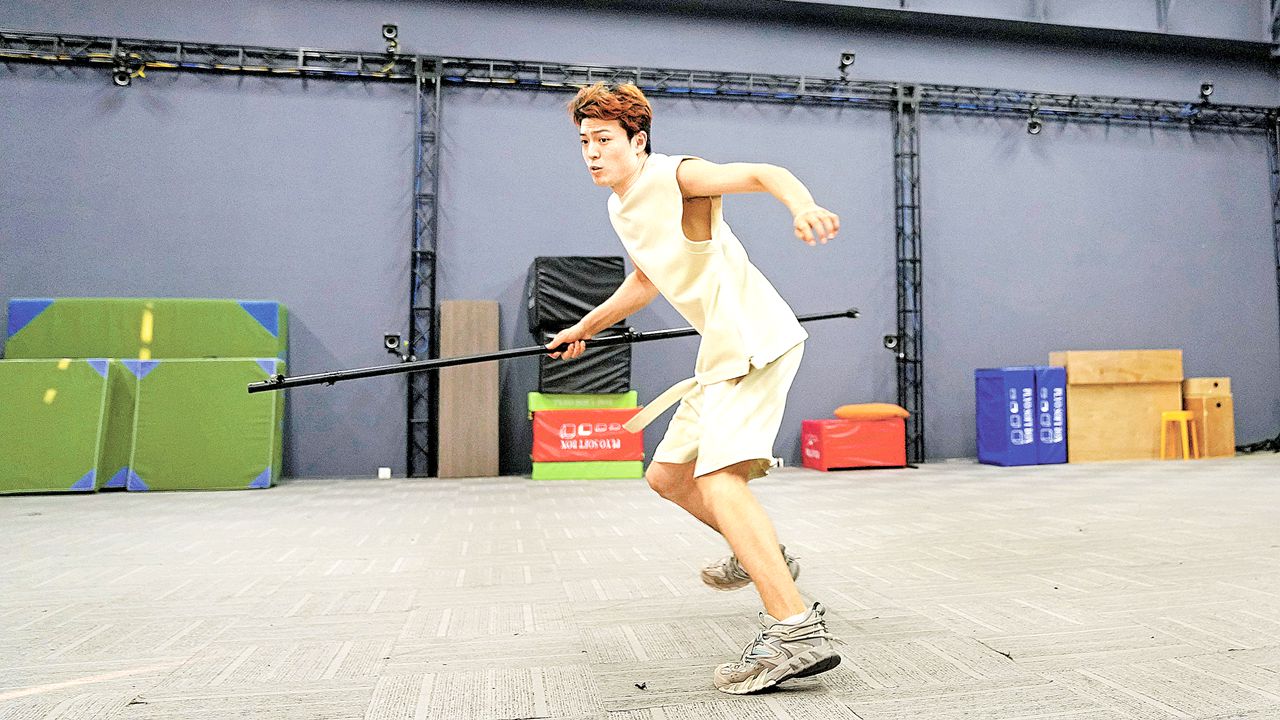
Yin Kai practices before a shoot in this Aug. 26 photo.
"It's a very competent game and although the studio that developed it, Game Science, is a studio that did not have much experience with combat-style video games, both visually and how it plays show it's a very well-made game and that's why it's been so successful," said Albert Garcia, who covers video games for a number of major media outlets and also teaches a degree course on the history of video games at the University of Barcelona's College of New Technologies.
As a participant in the game’s production, Yin felt a lot of pride and joy following its success. “Seeing that my performance is loved by the gamers, I feel like all the hard work I put into it is worthwhile,” he said. (Xinhua)